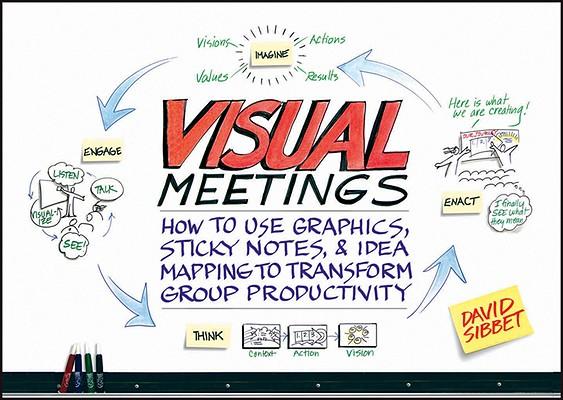There are many different facilitation styles, graphic facilitation is (for obvious reasons) one of the most eye-catching.
When I first heard about graphic facilitation, I was both intrigued and skeptical. Could I learn to draw well enough that I’d want my doodles put up panoramically around a room? Would I find myself wanting to do activities graphically rather than sticking to dialogue, discussion, or experiential activities? What ways could graphic facilitation enhance my facilitator toolbox that other methods and styles hadn’t?
Visual Meetings: How graphics, sticky notes, and idea mapping can transform group productivity was my introduction to the world of graphic facilitation and from reading the book, got to tell you, I’m hooked. I found myself having continuous waves of inspiration for new activities that I could create and facilitate. I practiced little doodles and took notes in graphically oriented ways. I was less intimidated by the idea of graphically representing something because of the practical tips and explanations that broke down the visual languages graphic facilitators use to capture ideas.

My least favorite thing about this book is that the title doesn’t do the content justice. This book is a facilitator’s treasure trove full of models, frameworks, tools, and new ideas for how to work with groups to access powerful learning. Sibbet breaks down not only the tools of the trade but also breaks down into simple language the issues that facilitators are trying to address.
The reason that we cannot work together and be open to our differences is we are no longer able to handle the complexity of what we are facing.
Favorite Thing About This Book
What I liked was how many new ideas the book helped me generate. I am always looking for new ways to work through complex problems and as I flipped through the pages I found myself writing down “new idea” or “activity” in my notebook over and over again. This book inspired me to take new approaches to some of the activities that I do all the time with groups and helped me feel less intimidated to draw in front of a room, that in an of itself is huge.
Quotes For Inspiration
Since this book is graphically oriented I thought I’d share some images from the book for inspiration!
How to draw a star-person. So fun!

How to find the best visual representation of your idea.

David’s visual idea map of the book itself.

An activity idea I’m totally borrowing.

I Recommend This Book For…
- Anyone facilitator tired of PowerPoint but believes that visuals add an important element to a training
- People who facilitate meetings where the goal is to help create a shared vision or understanding of the task, problem, or strategy at hand
- Any facilitator who wants to feel more confident when recording or drawing in front of a group
- Anyone who has wanted to get into graphic facilitation and isn’t sure where to start

